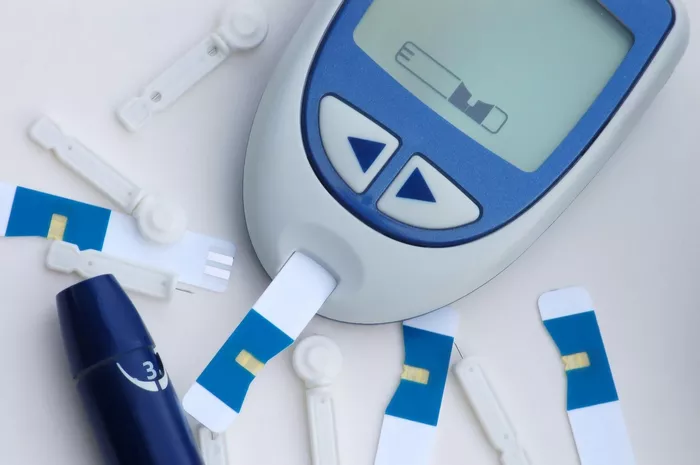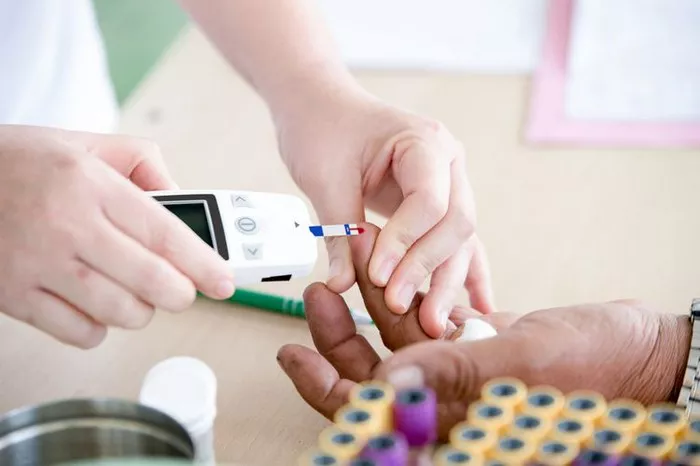Diabetic foot ulcers are a serious complication of diabetes, often leading to significant morbidity and healthcare costs. These ulcers are not only painful but can also lead to infections, gangrene, and even lower limb amputation if left untreated. Understanding the causes and risk factors of diabetic foot ulcers is crucial for prevention and effective management. In this comprehensive article, we’ll explore the multifactorial nature of diabetic foot ulcers, delve into the underlying mechanisms, and discuss strategies for prevention and treatment.
What Are Diabetic Foot Ulcers?
Diabetic foot ulcers are open wounds or sores that occur on the feet of individuals with diabetes, typically as a result of neuropathy (nerve damage) and/or peripheral arterial disease (poor blood circulation). These ulcers often develop on the bottom of the foot, over pressure points such as the ball of the foot or the heel, and can penetrate through the skin into deeper layers, including muscle and bone. Diabetic foot ulcers are a common complication of diabetes, affecting approximately 15% of individuals with diabetes during their lifetime.
Causes of Diabetic Foot Ulcers:
- Neuropathy: Diabetic neuropathy is nerve damage caused by long-term high blood sugar levels. Neuropathy affects the nerves that control sensation (sensory neuropathy), as well as those that regulate muscle function (motor neuropathy) and involuntary bodily functions (autonomic neuropathy). Sensory neuropathy reduces the ability to feel pain, heat, cold, or pressure, increasing the risk of injury and delaying wound healing. Motor neuropathy can lead to muscle weakness and changes in foot structure, such as hammertoes or Charcot foot deformity, which can contribute to foot ulceration.
- Peripheral Arterial Disease (PAD): Peripheral arterial disease is a condition characterized by narrowing or blockage of the arteries that supply blood to the legs and feet. Poor blood circulation reduces the delivery of oxygen and nutrients to the tissues, impeding wound healing and making the feet more susceptible to injury and infection.
- Foot Deformities: Structural abnormalities of the foot, such as bunions, hammertoes, or Charcot foot deformity, can create areas of increased pressure or friction, leading to the formation of calluses, blisters, or ulcers over time.
- Trauma: Minor injuries or trauma to the feet, such as cuts, burns, blisters, or puncture wounds, can go unnoticed due to reduced sensation from neuropathy, increasing the risk of infection and ulceration.
- Poor Foot Care: Inadequate foot hygiene, improper nail trimming, wearing ill-fitting shoes, and walking barefoot increase the risk of foot injuries and ulcer formation.
- Peripheral Vascular Disease (PVD): Peripheral vascular disease refers to conditions that affect blood vessels outside the heart and brain, leading to reduced blood flow to the extremities. PVD can exacerbate the effects of neuropathy and impair wound healing.
- Compromised Immune Function: Diabetes can weaken the immune system, making individuals more susceptible to infections that can lead to ulcer formation and delayed healing.
Risk Factors for Diabetic Foot Ulcers:
Several factors increase the risk of developing diabetic foot ulcers, including:
- Long-standing diabetes
- Poorly controlled blood sugar levels
- Smoking
- High blood pressure
- High cholesterol
- Obesity
- History of foot ulcers or amputations
- Advanced age
- Male gender
- Peripheral neuropathy
- Peripheral arterial disease
- Foot deformities
- Kidney disease
- Eye disease (diabetic retinopathy)
Prevention of Diabetic Foot Ulcers:
Preventing diabetic foot ulcers involves comprehensive foot care strategies aimed at reducing risk factors and promoting foot health. Here are some key preventive measures:
- Maintain Optimal Blood Sugar Control: Keeping blood sugar levels within target ranges can help prevent or delay the onset of neuropathy and peripheral arterial disease, reducing the risk of foot ulcers.
- Inspect Feet Daily: Perform daily foot inspections to check for any signs of injury, redness, blisters, calluses, or changes in skin temperature or texture. Use a mirror or ask a caregiver for assistance if necessary.
- Practice Good Foot Hygiene: Wash feet daily with mild soap and warm water, and thoroughly dry them, especially between the toes. Moisturize feet with lotion to prevent dry skin and cracking, but avoid applying lotion between the toes.
- Trim Nails Carefully: Trim toenails straight across and file any sharp edges to prevent ingrown toenails and injury. Avoid cutting nails too short or cutting into the corners.
- Wear Proper Footwear: Choose well-fitting shoes made of breathable materials with roomy toe boxes and adequate arch support. Avoid high heels, narrow-toed shoes, and shoes with seams or rough edges that can cause friction or pressure points.
- Inspect Shoes Regularly: Check shoes for any foreign objects, rough edges, or signs of wear and tear that could cause irritation or injury to the feet.
- Protect Feet From Extreme Temperatures: Avoid exposure to extreme heat or cold, as individuals with diabetes may have reduced sensitivity to temperature changes and may not feel burns, frostbite, or other injuries.
- Avoid Walking Barefoot: Always wear shoes or slippers, even indoors, to protect feet from injury. Avoid going barefoot on hot surfaces, sandy beaches, or rough terrain.
- Manage Foot Deformities: Address foot deformities such as bunions, hammertoes, or Charcot foot deformity promptly with appropriate footwear, orthotic devices, or surgical interventions if necessary.
- Seek Prompt Medical Attention: If you notice any signs of infection, injury, or changes in foot health, consult a healthcare provider or podiatrist immediately for evaluation and treatment.
Treatment of Diabetic Foot Ulcers:
Treatment of diabetic foot ulcers typically involves a multidisciplinary approach, including wound care, infection management, offloading pressure from the affected area, optimizing blood sugar control, and addressing underlying risk factors such as neuropathy and peripheral arterial disease. Treatment may include:
- Debridement (removal of dead or infected tissue)
- Dressing changes
- Antibiotic therapy
- Offloading devices (such as special shoes, boots, or casts)
- Surgical interventions (such as debridement, skin grafts, or amputation in severe cases)
- Hyperbaric oxygen therapy
- Negative pressure wound therapy
- Topical growth factors or bioengineered skin substitutes
Conclusion:
Diabetic foot ulcers are a serious and potentially life-threatening complication of diabetes, but they are largely preventable with proper foot care and management of underlying risk factors. By understanding the causes, risk factors, and preventive strategies outlined in this article, individuals with diabetes can take proactive steps to protect their foot health and reduce the risk of developing foot ulcers. Early detection, prompt treatment, and regular foot care are essential for preventing complications and preserving overall health and quality of life. It is important for individuals with diabetes to work closely with their healthcare providers, including podiatrists and diabetes educators, to develop personalized foot care plans and receive appropriate monitoring and treatment as needed. With diligence, education, and comprehensive foot care practices, individuals with diabetes can minimize the risk of diabetic foot ulcers and maintain optimal foot health for years to come.
























